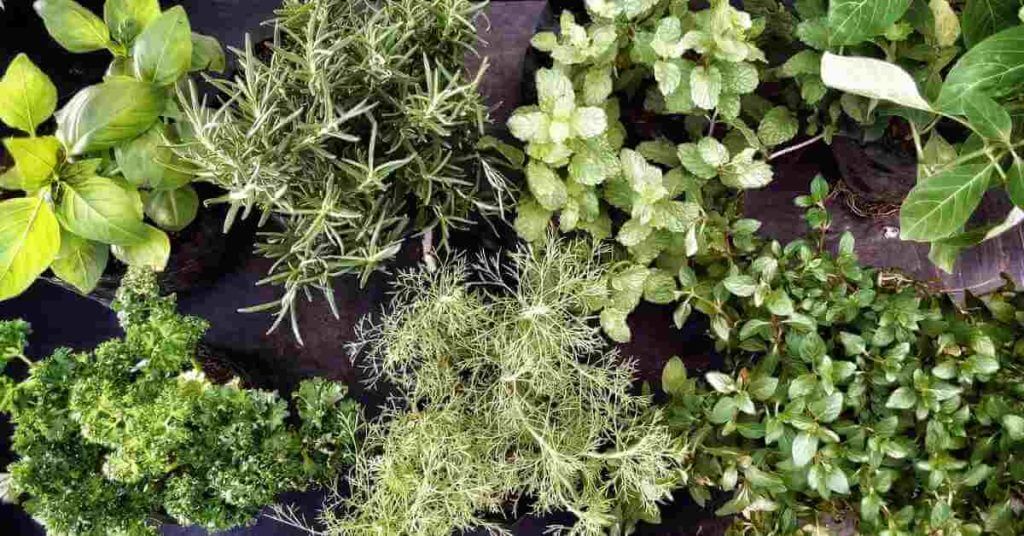
Companion Planting Chart For Herbs
Here is a companion planting chart for herbs, showing which herbs work great together, and which should be avoided.

While fruits and vegetables take the spotlight in most garden plots, herbs are the backing singers that provide the background support, making the whole ecosystem sing in perfect harmony.
In terms of companion planting, herbs are givers, providing many benefits in terms of nitrogen-fixing, pest repellent, and pollination, hence why herbs such as basil, thyme, and dill are frequently recommended as companion plants for most fruits and vegetables.
Fortunately, herbs are also an excellent source of flavoring for all of your dishes, whether the aromatic crunch of basil alongside your homegrown beef tomatoes or the refreshing wisp of mint to go with your rack of lamb.
Whether growing herbs for their direct use and taste or as a companion for other fruits and vegetables, the companion planting chart for herbs below will provide the best starting point for you to build a healthy and harmonious garden.
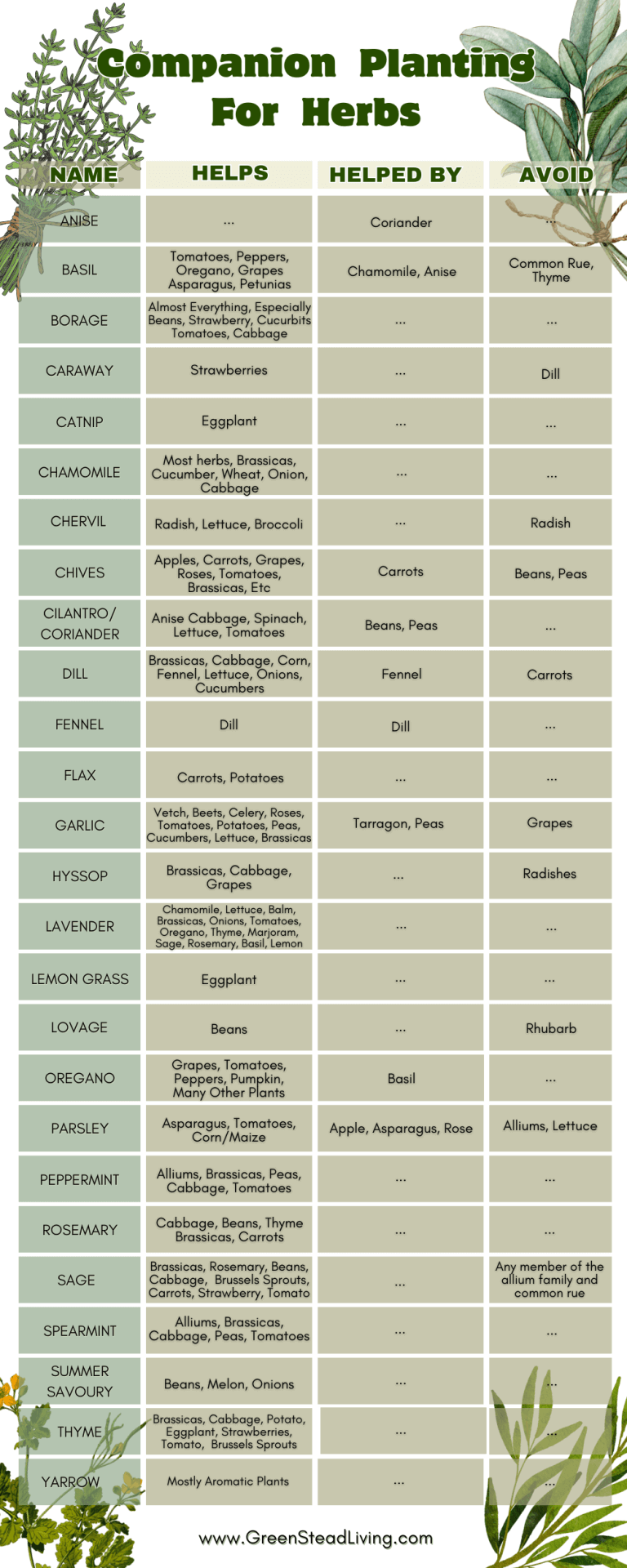
When growing herbs close together, whether in an outside garden plot or an inside container pot, the key is to group like-minded herbs that have similar growing requirements, such as similar soil, water, light, and needs.
Most herbs do best with full sun, though a few can manage with as little as 2 hours each day. Mediterranean herbs like lavender, rosemary, and thyme crave lots of sunlight whereas softer, greener herbs like parsley, lemon balm, and mint can tolerate less sun. But remember, herbs tend to have stronger flavors and scents when they get plenty of sunlight, so you should be targeting full sunlight herbs where possible while utilizing partial sun herbs in those less sun-prone spots.
Almost all herbs require well-draining soil, as do most vegetables, so soil and sunlight conditions should be easy to control, and you won’t have to worry too much about managing them.
Watering herbs can be tricky because they don’t all need the same amount of water. While many are hardy and can handle dry spells, not all fall into this category. It’s wise to group herbs with similar water needs together. For instance, basil, tarragon, and oregano prefer more moisture, whereas lavender, rosemary, and thyme are more drought-tolerant.
If you’re looking for a strong starter herb combination, look no further than sage, rosemary, thyme, and lavender. These make great partners in the garden bed, as they all thrive under the same conditions and love well-drained soil, plenty of sunshine, and don’t need much water.
Any areas with plants combined with mint will soon just become mint. It is like a weed in that it spreads and spreads and usually out-competes anything else in its vicinity through rapidly spreading underground roots that send up new shoots and choke any nearby plants.
Although I love mint, and its aromatic scents can help fend off pests, its rapid spread and difficulty to control usually outweigh its benefits, so I always grow mint in a container where I can manage its spread.
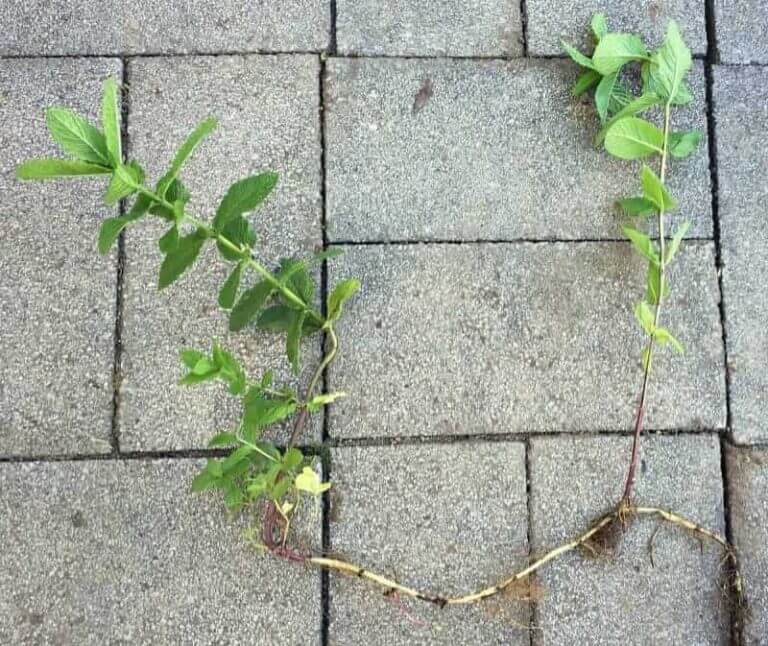
Anyone who’s ever grown basil knows it needs nutrient-rich soil. Thyme and sage, however, need drier and often sandier soil, making them difficult to plant successfully in the same soil space, so it’s best to separate basil and thyme into different sections.
You will commonly hear that parsley and lettuce should not be grown together, and I have found it difficult to grow parsley in close proximity myself. I can only think this is because parsley and lettuce both require a fair amount of water and can quickly leave the soil dry when not watered sufficiently. It may be best to separate your lettuce and parsley, or at least keep in mind that they need to be watered more frequently.
Hyssop and radishes are also commonly placed on the avoid list due to hyssop being a tall herb that can bring a lot of shade, and radishes need full sun for at least 6 hours a day otherwise they will put energy into leaf growth rather than root growth. The same goes for any plant that requires a lot of sunlight.
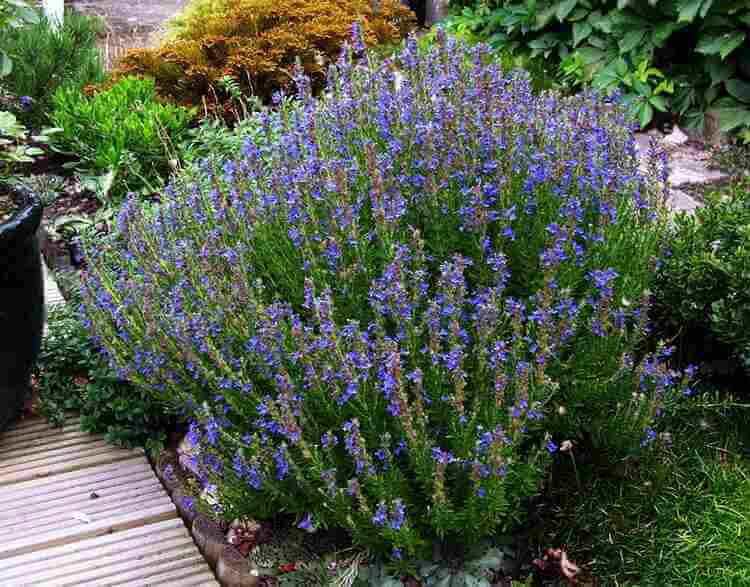
Herbs play a crucial role on and off the plate, supporting the growth of other plants while adding flavor and aroma to dishes.
Fortunately, most herbs have lots to offer and provide little conflict, with some exceptions like mint that, though aromatic, can spread aggressively and is best grown in containers.
Certain herbs, like basil and thyme, prefer different soil conditions, so it’s wise to separate them if possible. Similarly, parsley and lettuce may compete for water, so keep them apart or water frequently. Be mindful of pairing herbs like hyssop and radishes, as their differing sunlight requirements can affect growth.
Watering herbs can be tricky because they don’t all need the same amount of water. While many are hardy and can handle dry spells, not all fall into this category. It’s wise to group herbs with similar water needs together. For instance, basil, tarragon, and oregano prefer more moisture, whereas lavender, rosemary, and thyme are more drought-tolerant.
If you’re looking for a strong starter herb combination, look no further than sage, rosemary, thyme, and lavender. These make great partners in the garden bed, as they all thrive under the same conditions and love well-drained soil, plenty of sunshine, and don’t need much water.
Any areas with plants combined with mint will soon just become mint. It is like a weed in that it spreads and spreads and usually out-competes anything else in its vicinity through rapidly spreading underground roots that send up new shoots and choke any nearby plants.
Although I love mint, and its aromatic scents can help fend off pests, its rapid spread and difficulty to control usually outweigh its benefits, so I always grow mint in a container where I can manage its spread.

Here is a companion planting chart for herbs, showing which herbs work great together, and which should be avoided.
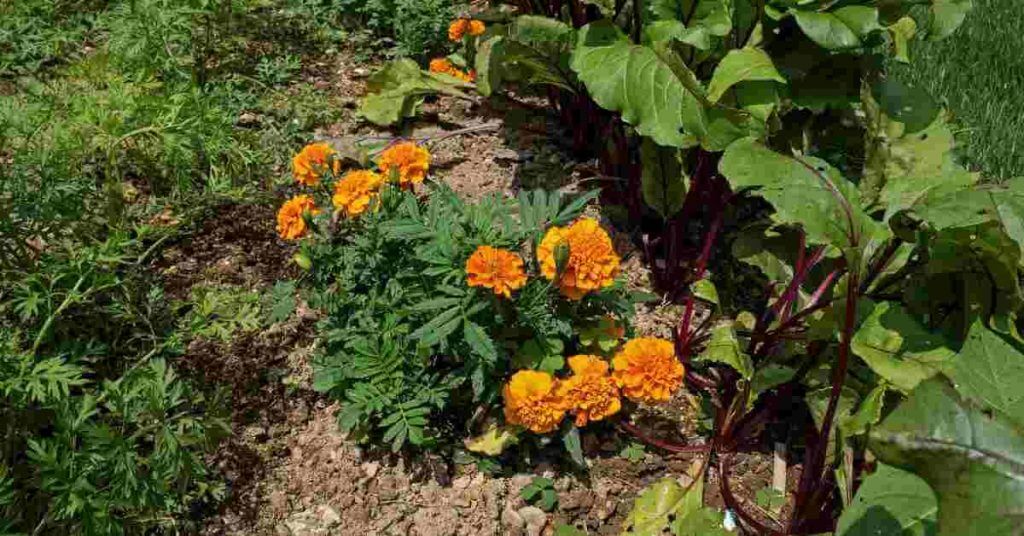
Looking for which plants are best for companion planting with flowers? This article contains a table with the best flowers and their many benefits.
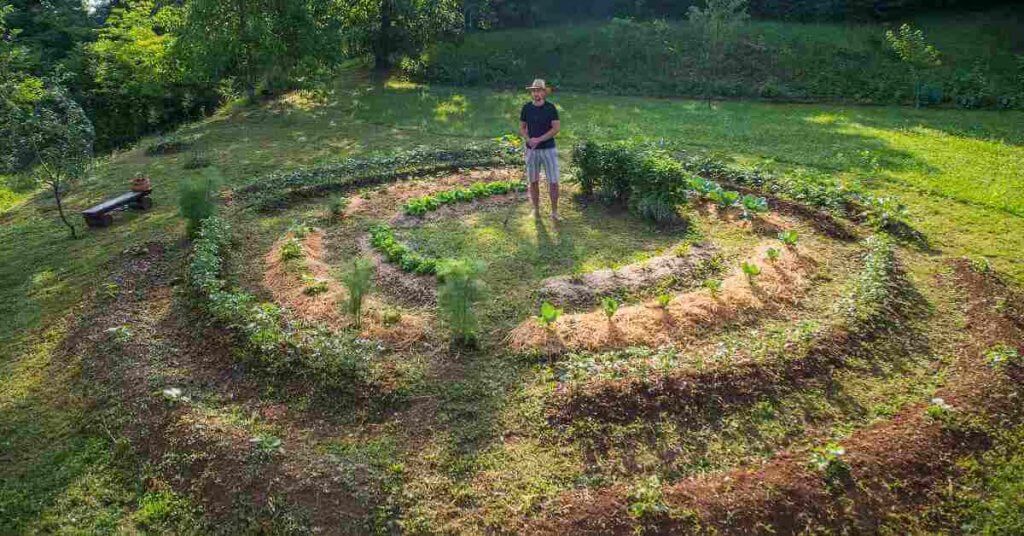
Learn how to start a permaculture garden: an easy beginners guide to creating a sustainable, thriving ecosystem in your own yard.
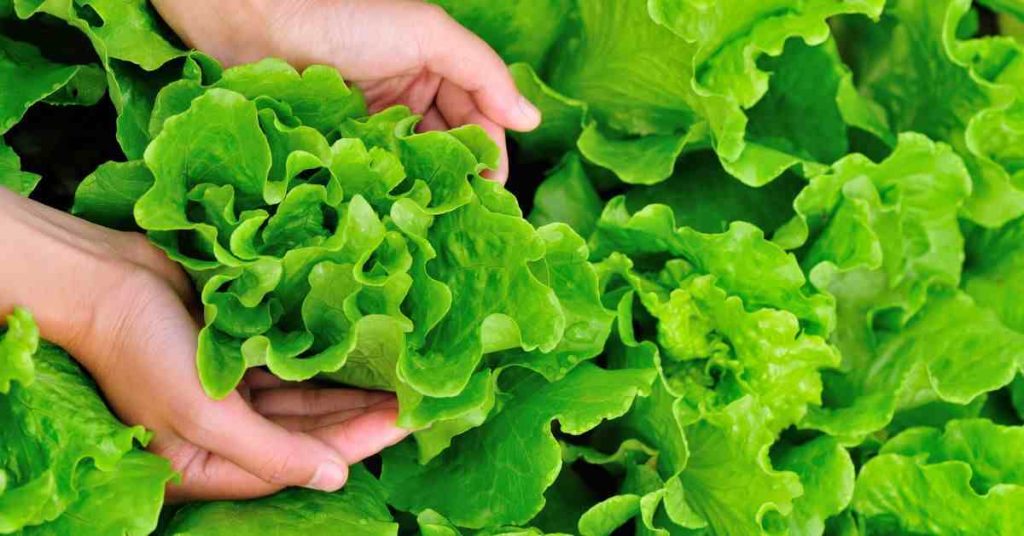
Learn how to grow lettuce from seed to harvest with these essential tips for a thriving garden and crisp salads.
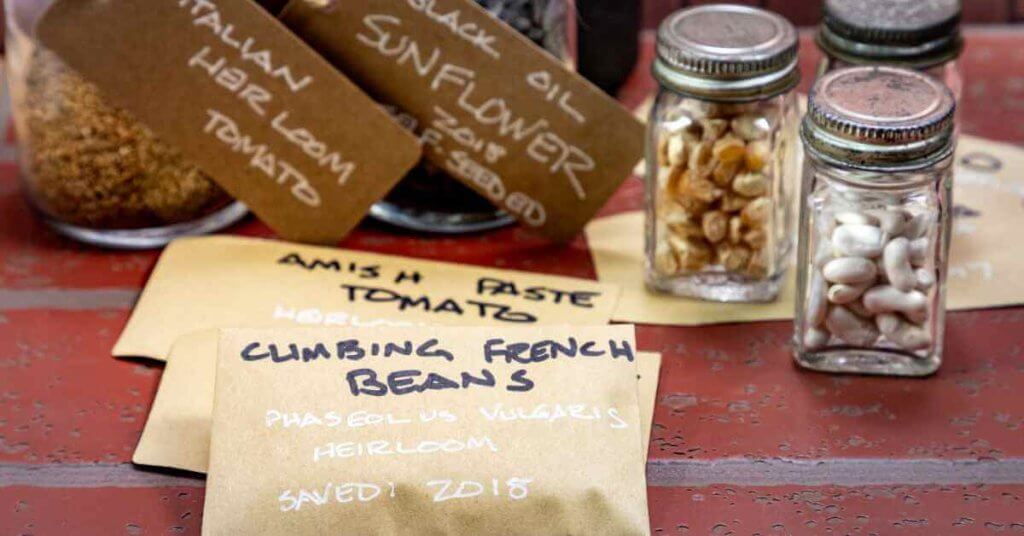
Heirloom seeds are varieties passed down for generations, preserving diversity. But what are heirloom seeds? They’re treasures of taste and tradition.

A companion planting chart for fruits, showing which plants help fruits, which are helped by fruit plants, and which to avoid.